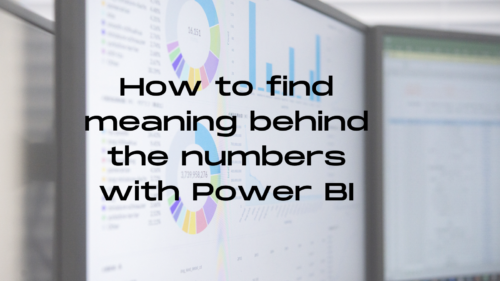Since the dawn of accounting software, financial reports have focused on function over form, generally replicating the look and feel of the paper reporting and ledger books that came before them. The critical components have always been the numbers, and the most direct way to confirm numbers is to look at … a table of numbers.
But for me, someone who wants to see the numbers but is not a trained accountant and who wants to truly understand what the numbers mean for the business, a table of values only helps to a degree. The raw numbers give me data, but not insights; I can see balances but not business decisions. Turning data into something that helps drive action and decisions is something that Microsoft Power BI is designed to do, so let’s discuss the value of using Power BI for financial reporting.
Power BI is labeled as data visualization by Microsoft, and most people translate that into reporting, saying it’s a reporting tool. While Power BI is great for reporting, to sell it as just “reporting” is lumping it in with other reporting tools we’ve had over time and doing it a disservice. Data visualization means true analytics — It means not just seeing data, but making it display in a way that helps highlight the important things about the data. Power BI takes this even a step further by allowing users to interact with the report (i.e. the visualizations) to see data from differing perspectives. This can really help highlight an issue (or some great news) a lot easier than a table of numbers.
Consider an example: Your organization has been growing for the past few months, and profit is up. Looking at your standard financial reports, you can see that profit numbers are increasing and gross margin is looking healthy. Great news, right? But what you might not be able to notice, unless your report includes it, is that one of your product lines is actually trending downward in their margin. Their downward trend is being obscured by a different product line’s dramatic growth in margin.
Even if your reports show different product lines and you can see this dip, you might need to build a separate report to figure out the issue. Perhaps it’s decreased demand for that product line or a single sales rep who keeps giving massive discounts to win deals. If you have to get IT to build a new report every time you want to see data a different way, days or weeks could go by before you can see the root cause and take corrective action.
If this same report were in Power BI, I could click on the section of my chart showing each product line to watch the gross margin trend line change for each one. If I saw that dip, I could drill down and see margin averages by region for that line, and drill further down to see individual reps. If I saw one rep giving away the farm, I could immediately follow up with that rep to find out why and make some changes.
That ability to interact with your data, to see it visually instead of as a table of values — and the immediacy of insight you can gain — is what makes Power BI so useful. In our example above, making that correction two weeks faster could mean significant value for your organization! If you’d like to learn more about Power BI for financial reporting, join us for our webinar on Aug. 18.








